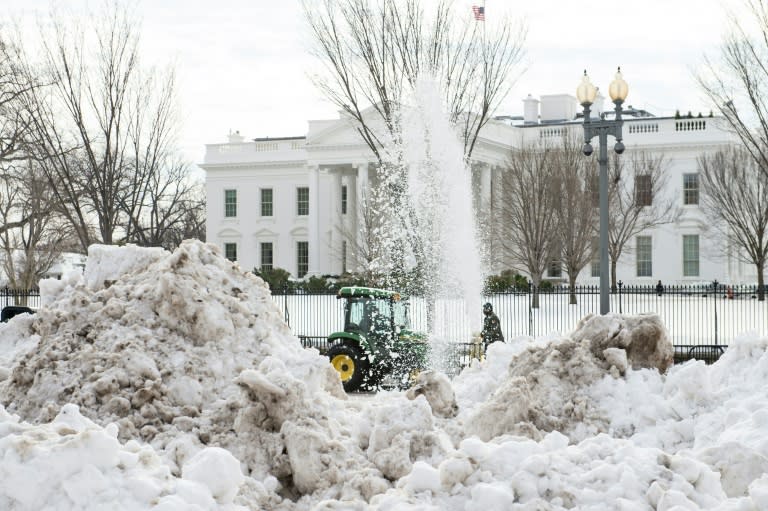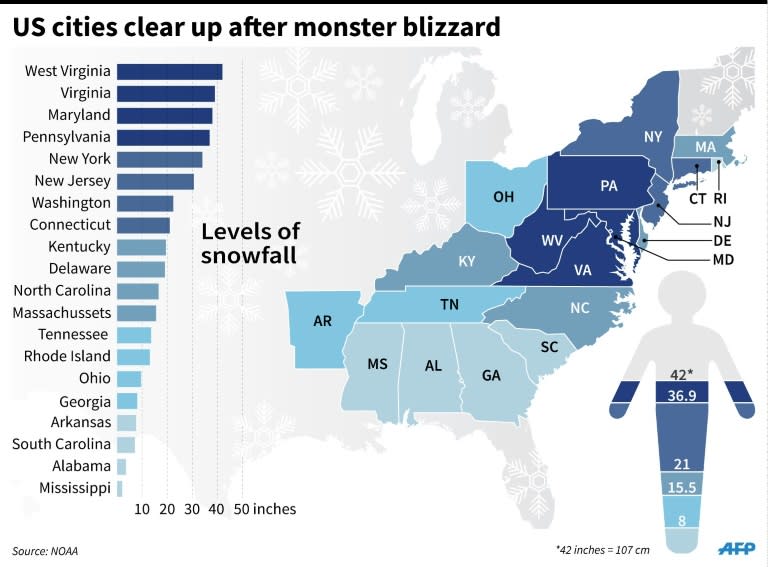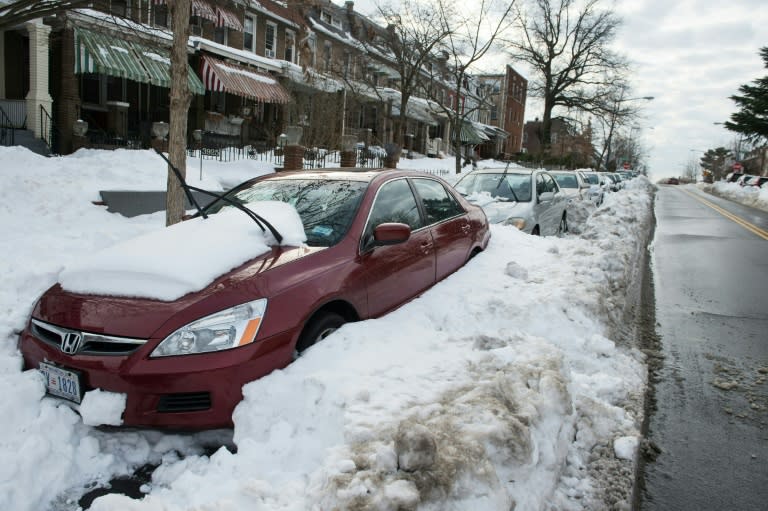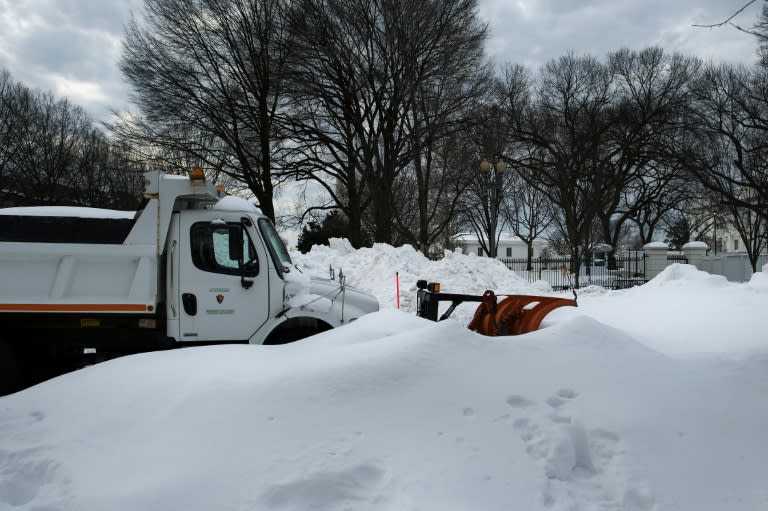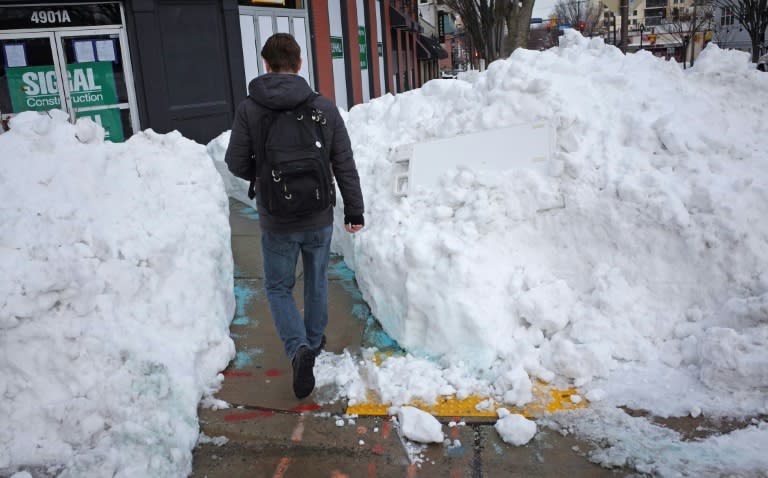Signs of return to normalcy in snow-bound Washington
Washington limped back to life Tuesday after the blizzard that blanketed the US East Coast, with public transport service improving, warmish weather aiding snow clean-up operations and city schools scheduled to reopen. On Tuesday, the federal government and schools nevertheless were closed for a second day after the weekend storm dumped 22 inches (56 centimeters) of snow on the US capital. Snow plows have yet to reach many residential streets in Washington and its suburbs, leaving them impassable as residents shoveled to clear their cars and sidewalks. The Metro subway system, which reopened partially on Monday after being closed all weekend, had planned to restore full service on five of its six lines. But tests run overnight showed snow and ice hampering a power rail. So the last stretch of a major above-ground line serving Northern Virginia remained shut Tuesday. Bus service was also spotty. However, temperatures reached 45 degrees Fahrenheit (7 Celsius) in the early afternoon, and similar above-freezing levels were forecast for Wednesday, which will help melt at least some of the snow, ice and slush. "We should see 50s by Saturday or Sunday, which could be the death blow to much of the snow," the Washington Post's Capital Weather Gang said. And Washington's public schools are now cleared and ready to reopen on Wednesday, Mayor Muriel Bowser said on Twitter. Still, frustration was evident among some commuters. David Greenwood, waiting for a shuttle bus at an inoperative subway station in the Virginia suburbs, gave up after 20 minutes in the early morning cold and said he would instead work from home. "This is one of the biggest cities in the country, one of the most preeminent cities. You'd expect something better than this," he told the Post. - 'No complaints' - Others urged patience. "The streets will get plowed when they get to it," said Ed Rich, who lives in the suburb of Rockville, Maryland. There, he said, the first plow did not reach his street until Monday morning. "I have no complaints. I think people need to be patient. Major roads need to be plowed first," he told the Post. One of four runways at Dulles International Airport remained closed as crews worked to remove snow and ice. Service was also still somewhat limited at Ronald Reagan National Airport. The storm affected some 85 million people and was blamed for at least 33 deaths as it slammed much of the coast from Friday into early Sunday. Many victims suffered heart attacks while shoveling snow or were killed on icy roads, and some died of carbon monoxide poisoning trying to stay warm in cars or homes. Washington is clogged with so much snow, much of it in now-dirty mountains, that it is not simply a matter of pushing it aside but rather removing it altogether in huge dump trucks and 18-wheelers. Pedestrians often have to pick their way through small passages dug out of tall curbside snow drifts. In one neighborhood of Arlington, Virginia, just outside the capital, residents traded tips online on walkable routes to grocery stores to replenish storm supplies now running low. Marooned elderly residents were relying on neighbors for help. A giant snow melter has been brought in from the state of Indiana, while a convoy of trucks is heading in from Connecticut, Chris Geldart, the capital's director of homeland security and emergency services, told the Post. Millions of children in the greater Washington metro area were again out of school as districts struggled with de-icing buses and salting sidewalks on school property. To help ease congestion, the US House of Representatives has opted to remain out of session for the coming week and no votes set until February 1. Some 26.8 inches (68 centimeters) of snow fell in New York's Central Park, the second-highest accumulation since records began in 1869, but New York -- more accustomed to winter weather -- bounced back more quickly from the storm. Beyond New York and Washington, New Jersey, Pennsylvania, Maryland and Virginia were the hardest-hit areas. A few locations surpassed one-day and two-day snow records, said the National Weather Service. The near-record-breaking snowfall also smothered cities like Philadelphia and Baltimore. Fatalities occurred in Arkansas, Delaware, the District of Columbia, Kentucky, Maryland, New Jersey, New York, North Carolina, Ohio, Pennsylvania, South Carolina, Tennessee and Virginia.

